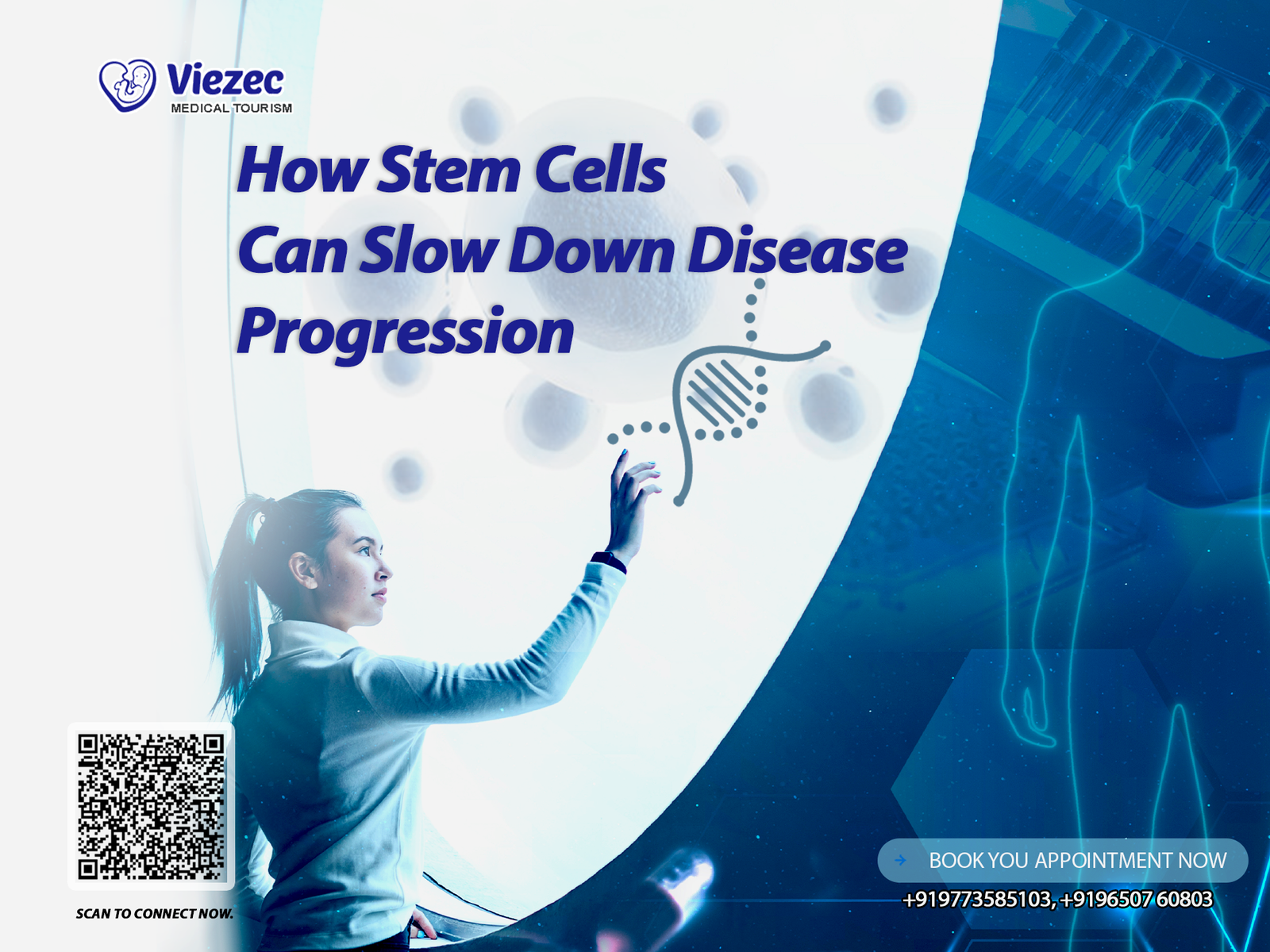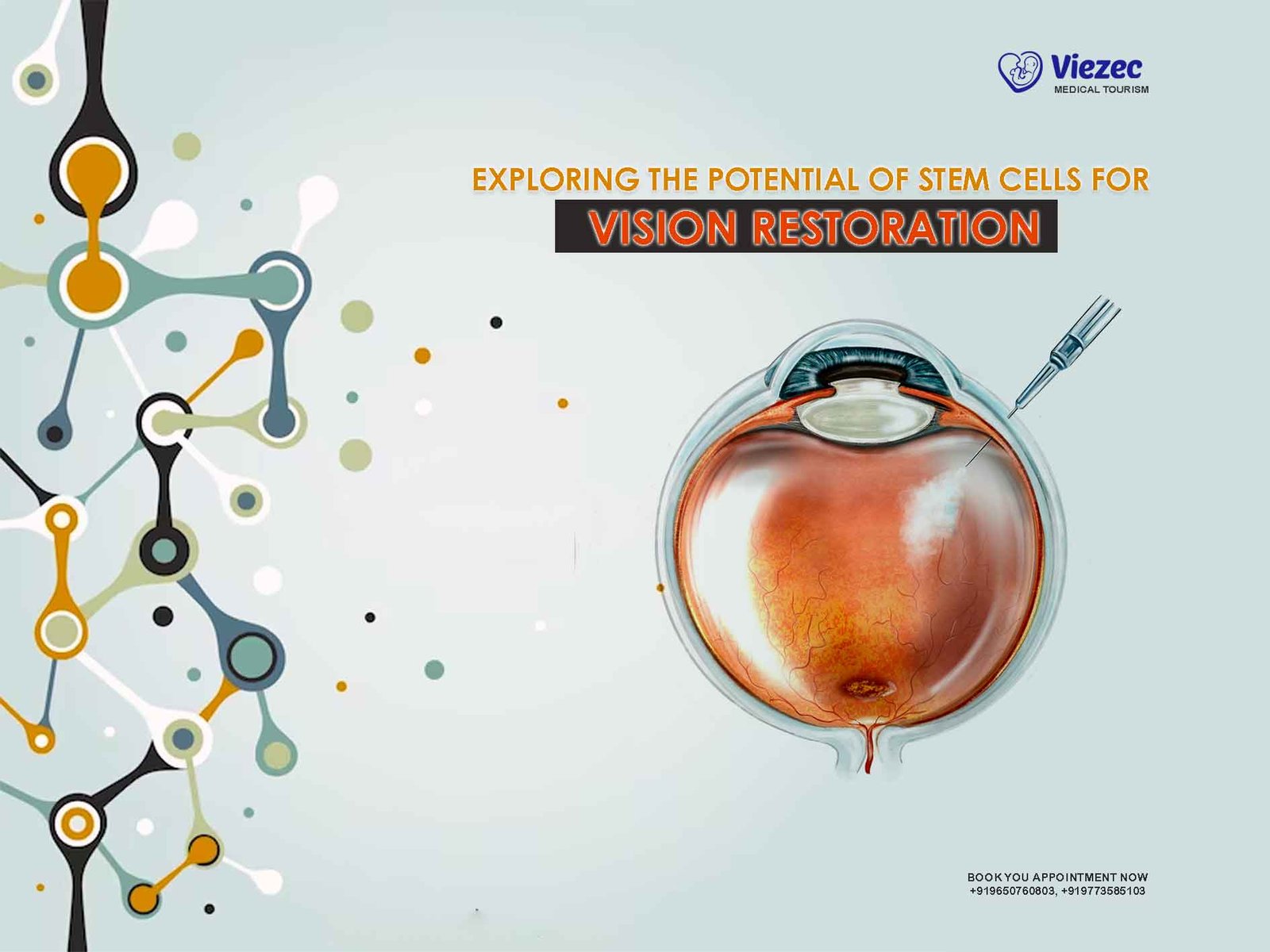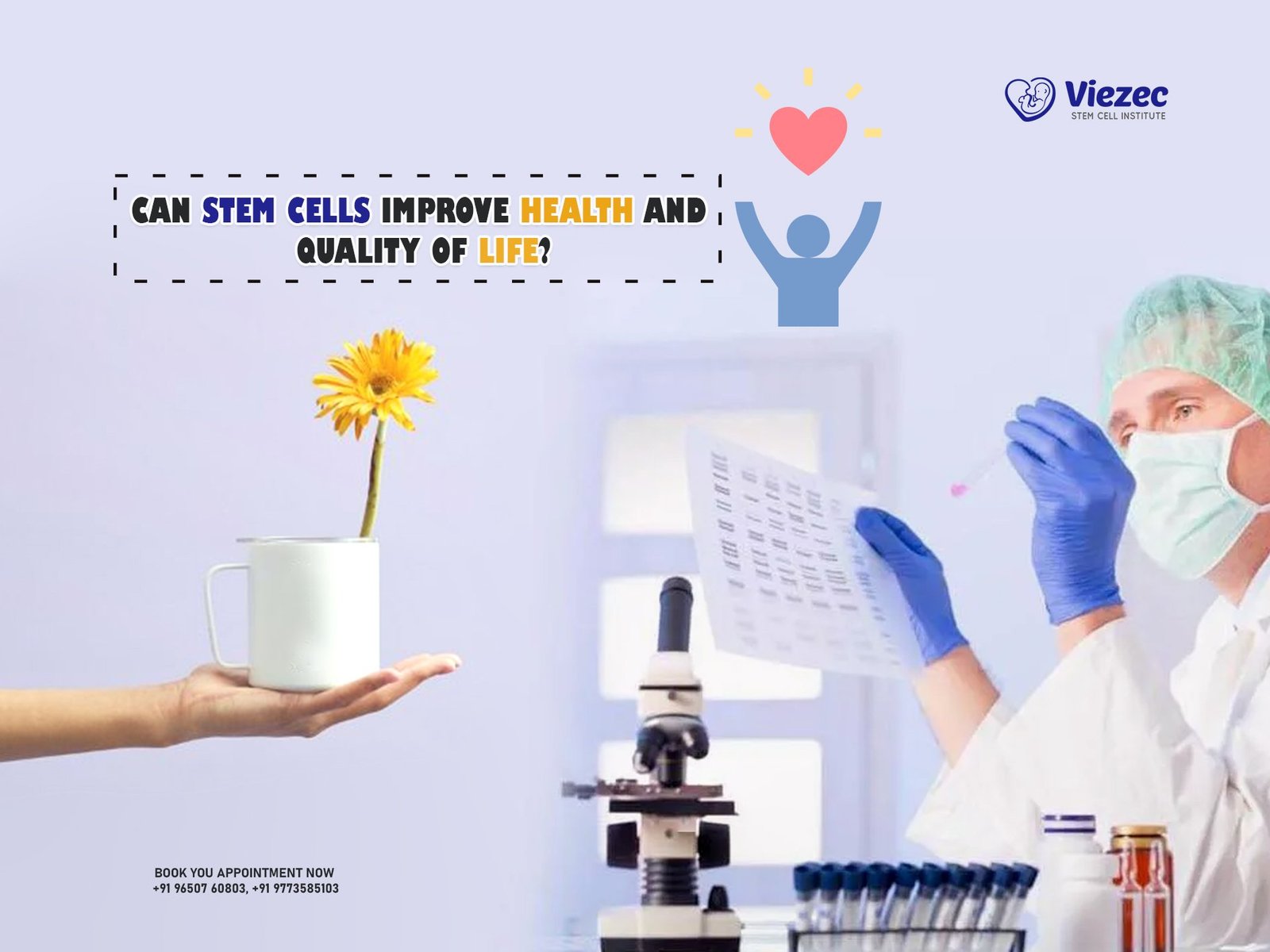In the realm of medical science, few discoveries have sparked as much hope and curiosity as stem cells. These remarkable cells, often dubbed the “building blocks of life,” possess the unique ability to develop into various cell types and regenerate damaged tissues. Over the past few decades, researchers have increasingly turned their attention to how stem cells can slow down disease progression, offering potential solutions for conditions once deemed untreatable. From neurodegenerative disorders like Parkinson’s disease to chronic conditions such as diabetes and heart disease, stem cell therapies are emerging as a transformative force in healthcare.
The concept of slowing disease progression is distinct from curing a disease outright. Many illnesses, particularly those that are degenerative or chronic, involve a gradual decline in bodily function. Stem cells offer a way to intervene in this process—repairing damaged tissues, modulating immune responses, and promoting regeneration. This article delves into the science behind stem cells, their mechanisms of action, current applications, challenges, and the future they promise in slowing the relentless march of disease.
What Are Stem Cells? A Biological Overview
Stem cells are undifferentiated cells with two defining properties: self-renewal and differentiation. Self-renewal allows them to replicate indefinitely, while differentiation enables them to transform into specialized cells such as neurons, muscle cells, or blood cells. These properties make stem cells a cornerstone of growth, development, and repair in the human body.
There are several types of stem cells, each with unique characteristics:
- Embryonic Stem Cells (ESCs): Derived from early-stage embryos, these pluripotent cells can become any cell type in the body. Their versatility makes them a focal point in research, though ethical concerns surround their use.
- Adult Stem Cells (ASCs): Found in tissues like bone marrow, skin, and the brain, these multipotent cells are more limited in their differentiation potential but play a critical role in tissue maintenance and repair.
- Induced Pluripotent Stem Cells (iPSCs): Adult cells reprogrammed to an embryonic-like state, iPSCs combine the flexibility of ESCs with fewer ethical dilemmas, as they don’t require embryo destruction.
- Mesenchymal Stem Cells (MSCs): A subset of adult stem cells, typically sourced from bone marrow or fat tissue, MSCs are prized for their immunomodulatory and regenerative properties.
Understanding these types is crucial because their applications in slowing disease progression vary depending on the condition and the patient’s needs.
The Mechanisms: How Stem Cells Combat Disease Progression
Stem cells don’t operate as a one-size-fits-all solution. Instead, they employ a variety of mechanisms to slow disease advancement, tailored to the pathology they address. Below are the primary ways stem cells exert their effects:
Tissue Repair and Regeneration
Many diseases—such as osteoarthritis, heart failure, and liver cirrhosis—involve the progressive loss of functional tissue. Stem cells can replace damaged cells by differentiating into the required cell type. For example, in myocardial infarction (heart attack), injected stem cells can transform into cardiomyocytes, helping to restore heart muscle and improve function. This regenerative capacity directly counteracts the tissue degradation that drives disease progression.
Modulation of the Immune System
Autoimmune diseases like multiple sclerosis (MS) and rheumatoid arthritis feature an overactive immune system attacking healthy tissues. Mesenchymal stem cells, in particular, have shown promise in modulating immune responses. They secrete anti-inflammatory molecules, reducing immune-mediated damage and slowing disease advancement. This immunosuppressive effect is a game-changer for conditions where inflammation accelerates deterioration.
Paracrine Effects: The Power of Signaling
Stem cells don’t always need to become new tissue to be effective. Through paracrine signaling, they release growth factors, cytokines, and extracellular vesicles that stimulate nearby cells to repair themselves. In neurodegenerative diseases like Alzheimer’s, stem cells may not replace lost neurons but can support surviving ones, slowing cognitive decline by enhancing the brain’s microenvironment.
Reduction of Fibrosis and Scarring
Chronic diseases often lead to fibrosis—excessive scar tissue that impairs organ function. Stem cells can reduce fibrosis by promoting healthy tissue remodeling. In conditions like pulmonary fibrosis, where lung tissue stiffens over time, stem cell therapies have shown potential in softening this progression, improving breathing capacity.
Anti-Apoptotic Effects
Cell death, or apoptosis, is a hallmark of many progressive diseases. Stem cells can secrete factors that inhibit apoptosis, preserving functional cells. In Parkinson’s disease, where dopamine-producing neurons die off, stem cell interventions aim to protect remaining neurons, delaying symptom worsening.
These mechanisms collectively illustrate how stem cells address the root causes of disease progression rather than merely masking symptoms—a paradigm shift in medical treatment.
Current Applications: Stem Cells in Action
The theoretical promise of stem cells is already translating into tangible clinical outcomes. Below are some key examples of how stem cell therapies are slowing disease progression across various conditions.
Neurodegenerative Diseases
Neurodegenerative disorders, such as Parkinson’s, Alzheimer’s, and amyotrophic lateral sclerosis (ALS), involve the relentless loss of neurons. Stem cell therapies aim to halt or slow this decline. In Parkinson’s, clinical trials have explored transplanting dopamine-producing neurons derived from stem cells into the brain. Early results suggest improved motor function and a slower disease trajectory. Similarly, in ALS, MSCs injected into the spinal cord have reduced inflammation and extended survival in some patients by protecting motor neurons.
Cardiovascular Diseases
Heart disease remains a leading cause of death globally, often progressing from an initial insult (like a heart attack) to chronic heart failure. Stem cell therapies, particularly using MSCs and iPSCs, have been tested to regenerate heart tissue post-infarction. A 2023 meta-analysis of clinical trials found that patients receiving stem cell injections had better heart function and slower progression to end-stage heart failure compared to controls. While not a cure, this approach buys critical time for patients.
Diabetes
Type 1 diabetes results from the autoimmune destruction of insulin-producing beta cells in the pancreas, while Type 2 involves progressive beta-cell dysfunction. Stem cell-derived beta cells have been successfully transplanted in preclinical models, restoring insulin production and stabilizing blood sugar levels. In early human trials, encapsulated stem cell implants have reduced reliance on insulin injections, slowing the metabolic deterioration associated with diabetes.
Musculoskeletal Disorders
Osteoarthritis, characterized by cartilage loss in joints, progresses painfully over time. MSCs injected into affected joints have demonstrated cartilage regeneration and reduced inflammation in Phase II trials. Patients report less pain and improved mobility, indicating a slower disease course compared to traditional treatments like steroids or surgery.
Liver Diseases
Chronic liver conditions like cirrhosis involve progressive scarring that impairs function. Hepatic stem cells and MSCs have been used to stimulate liver regeneration and reduce fibrosis. A 2024 study showed that patients with alcoholic liver disease who received stem cell therapy had lower rates of progression to liver failure, highlighting the potential to extend organ viability.
Challenges in Stem Cell Therapy
Despite the excitement, stem cell therapies face significant hurdles that must be addressed to maximize their impact on disease progression.
Safety Concerns
One major challenge is ensuring safety. Stem cells, particularly pluripotent ones like ESCs and iPSCs, can form teratomas—benign tumors—if they differentiate uncontrollably. Rigorous screening and delivery methods are needed to mitigate this risk. Additionally, immune rejection remains a concern, especially with allogeneic (donor-derived) stem cells, necessitating immunosuppressive drugs or autologous (patient-derived) alternatives.
Efficacy and Consistency
Clinical outcomes vary widely. Factors such as the stem cell source, dosage, delivery method, and patient condition influence success rates. For instance, a therapy effective in early-stage Parkinson’s may fail in advanced cases where neuronal loss is extensive. Standardizing protocols is a pressing need to ensure consistent results.
Ethical and Regulatory Issues
Embryonic stem cells, while potent, raise ethical questions about embryo use, limiting their adoption in some regions. Regulatory bodies like the FDA and EMA impose stringent requirements for approval, slowing the transition from lab to clinic. iPSCs bypass some ethical concerns but introduce complexities in reprogramming safety.
Cost and Accessibility
Stem cell therapies are expensive, often costing tens of thousands of dollars per treatment. Scaling production, such as through bioreactors for cell expansion, and reducing costs are critical to making these therapies accessible to broader populations.
Long-Term Effects
Most trials focus on short-term outcomes, leaving questions about durability. Will stem cell benefits persist, or will disease progression resume after an initial slowdown? Longitudinal studies are underway, but answers remain years away.
Future of Stem Cells in Disease Management
Looking ahead, the potential of stem cells to slow disease progression is poised to expand dramatically. Advances in technology and research are paving the way for breakthroughs that could redefine healthcare.
Personalized Medicine
The rise of iPSCs enables patient-specific therapies. By reprogramming a patient’s own cells, therapies can be tailored to their genetic makeup, minimizing rejection and optimizing efficacy. Imagine a future where a diabetic patient receives beta cells derived from their skin, perfectly matched to their body.
Gene Editing Synergy
Combining stem cells with gene-editing tools like CRISPR offers a powerful duo. Genetic defects driving diseases—such as sickle cell anemia or muscular dystrophy—could be corrected in stem cells before transplantation, halting progression at its source. Early trials in sickle cell disease have already shown patients living symptom-free post-treatment.
Bioengineering and Organoids
Stem cells are being used to create organoids—miniature organ models—for drug testing and disease modeling. These 3D structures could predict how a patient’s disease will progress and how stem cell therapies might intervene, personalizing treatment plans further.
Systemic Delivery Innovations
Current therapies often involve localized injections, but systemic delivery (e.g., intravenous infusion) could target multiple organs simultaneously. Nanotechnology and smart biomaterials are being developed to guide stem cells to disease sites, enhancing their reach and impact.
Preventive Applications
Beyond slowing progression, stem cells might one day prevent diseases from advancing past their earliest stages. For example, administering stem cells to at-risk individuals—such as those with a genetic predisposition to Alzheimer’s—could bolster tissue resilience before symptoms emerge.
Case Studies: Real-World Impact
Case Study 1: Maria’s Parkinson’s Journey
Maria, a 58-year-old teacher, was diagnosed with Parkinson’s disease in 2022. By 2025, her tremors and stiffness worsened, impacting her daily life. Enrolled in a clinical trial, she received iPSC-derived dopamine neurons implanted into her brain. Six months later, her motor symptoms stabilized, and progression slowed noticeably. While not cured, Maria regained enough function to continue teaching part-time, a testament to stem cells’ ability to extend quality of life.
Case Study 2: Ahmed’s Heart Failure
Ahmed, a 45-year-old mechanic, suffered a heart attack in 2023, leading to progressive heart failure. In 2025, he underwent MSC therapy, with cells injected into his heart muscle. Over the next year, his ejection fraction—a measure of heart pumping efficiency—improved from 25% to 40%, and his fatigue lessened. His disease progression halted, delaying the need for a transplant and showcasing stem cells’ regenerative power.
A New Frontier in Disease Management
Stem cells represent a frontier where science meets hope. Their ability to slow disease progression—through regeneration, immune modulation, and paracrine effects—offers a lifeline to millions grappling with chronic and degenerative conditions. From repairing hearts to stabilizing neurodegenerative decline, stem cells are rewriting the narrative of what’s possible in medicine.
Yet, this journey is far from complete. Overcoming safety, efficacy, and accessibility challenges will determine how widely these therapies reshape healthcare. As research accelerates and technologies converge, the dream of not just slowing but halting disease progression inches closer to reality. For now, stem cells stand as a beacon of progress—a promise that the relentless advance of disease can be tempered, one cell at a time.









